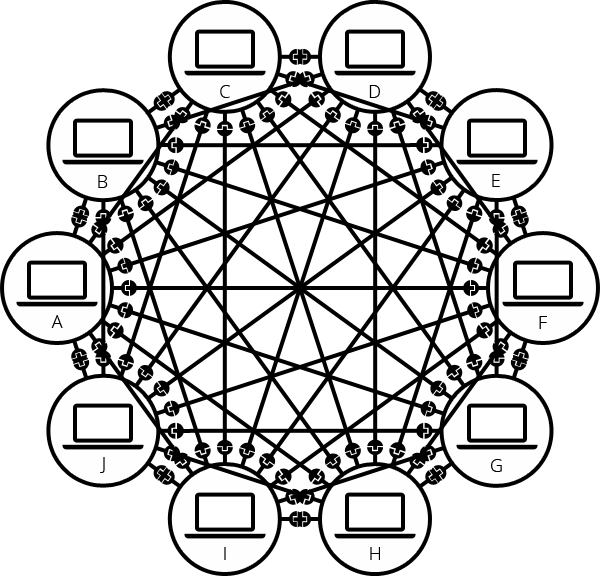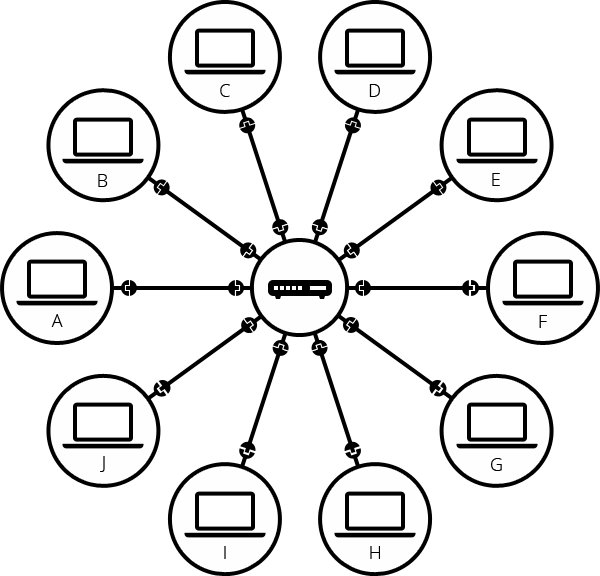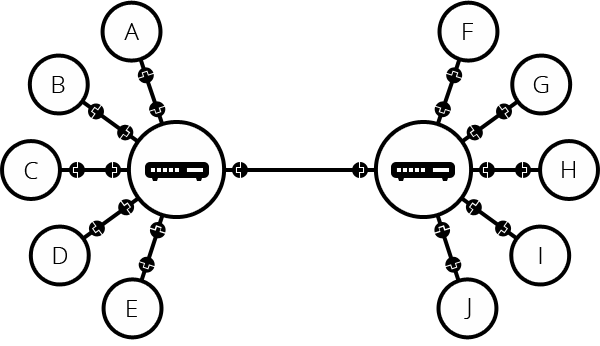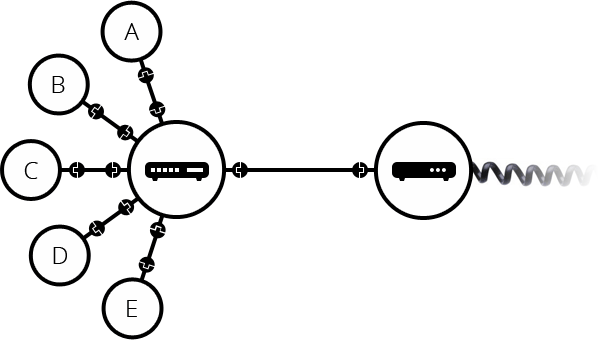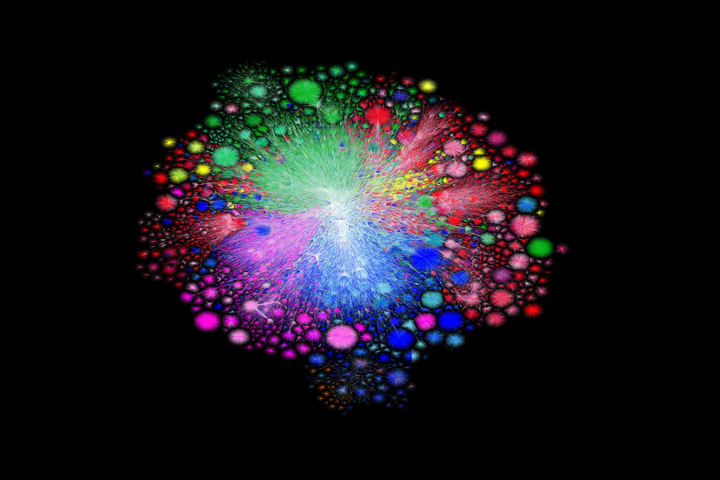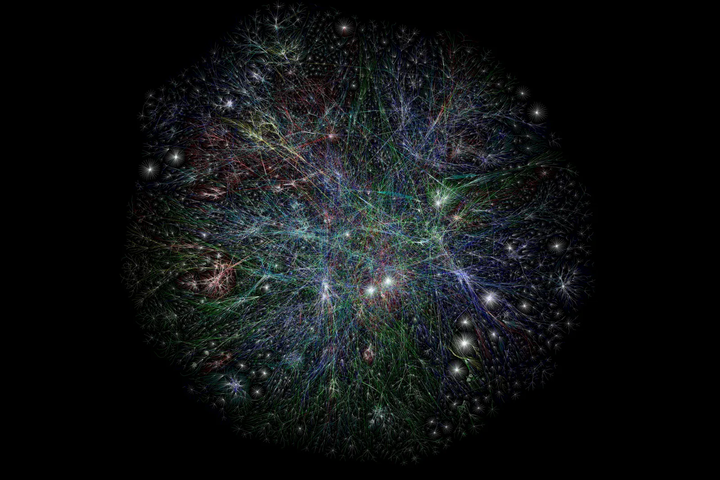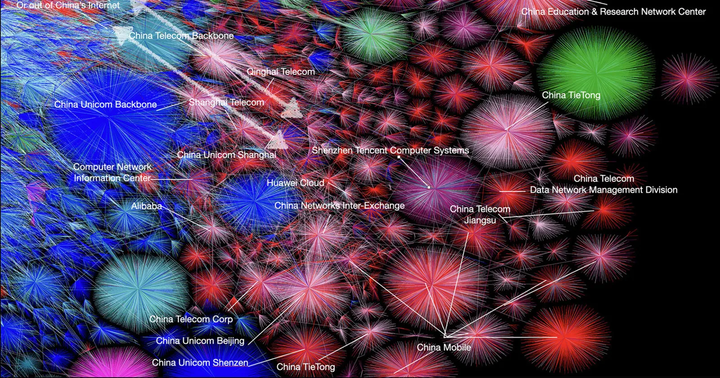The Internet is the backbone of data transmission over the network, the technical infrastructure that makes it possible. At its core, the Internet is a large network of computers that are "connected and communicate" with each other.
The history of the Internet dates back to the 1960s. It was created as a research project funded by the US Army and then turned into a public infrastructure with the support of many universities and private companies. The various technologies that power the Internet have evolved over
time, but the way it works hasn’t changed much.
How does the Internet work?
When you need to establish a connection between two computers, you can either connect them physically (using an Ethernet cable) or wirelessly (using a Wi-Fi network or Bluetooth, for example ). All modern computers support various types of connections.
Note: In this article, we will only talk about cables, however, the principle of wireless networks is the same.
More than two computers can connect to the network. You can connect as many PCs as you like. By increasing the number of connected devices, you complicate the process of establishing a connection between them. If you are trying to link ten computers, for example, you will need 45 cables with nine plugs per PC!
To solve this problem, each device on the network connects to a special tiny computer – a router. It has only one task: to make sure that a message sent from one computer gets to the right PC. To send a message to computer B, computer A must first send it to the router, which in turn will forward the message to the correct PC and ensure that it is not delivered to another device.
After we add a router to our network diagram, we only need 10 cables, plus a plug for each computer and a router with 10 plugs.
Networking
If we are talking about a small network, then the above option is great for establishing a connection between computers. But what about connecting hundreds, thousands, billions of devices? Of course, here already one router will not be enough. You already know that a router is also a computer, so what prevents us from connecting two routers together? So let’s do it.
By connecting computers to routers and then routers to routers, we can increase the size of a network indefinitely.
Such a network is very similar to what we call the Internet, but we have forgotten something. We created it for our own purposes. After all, there are other networks: your friends, neighbors, relatives. Anyone can create their own network of computers. However, it is impossible to run a cable from your home to the rest of the world. And what do we do now? Well, there are already cables running to your house that you can use to call other people (telephone) or turn on the lights (electricity). The telephone network connects you to people all over the world, so this is the cable we need. To connect our network to the telephone infrastructure, you need special equipment, which is called a modem. It converts information from our computer, making it available for both sending and receiving over the telephone network.
Now we are connected to the telephone infrastructure. The next step is to send messages from our network to another network. To do this, you need to use the services of Internet Service Providers (ISP). An ISP is a company that manages interconnected routers and can also access routers from other ISPs. Thus, our message is transmitted through the association of ISP networks to the desired network. The Internet, on the other hand, includes many such individual network connections.
world wide web illustration
But how big is the Internet? How many such networks does it include? Millions of devices are connected to the Internet, and it would seem impossible to display them all in one picture. However, Cliffland researcher Barrett Lyon proved otherwise.
In November 2003, security researcher Barrett Lyon was in his senior year at California State University, Sacramento, working as a penetration tester, a hacker hired by companies to find weaknesses in their own systems. At the start of penetration testing, Lyon always did a basic reconnaissance of the customer’s infrastructure. "Just in case," he says. He realized that in this way he could derive a formula by which he could see what the new network for future penetration testing looked like. “This formula became the basis for creating software that can do all the work for me," Lyon says.
One day, while having lunch with colleagues, Lyon Barrett suggested using his network mapper to draw the entire Internet. “They thought it was a pretty funny idea, so they bet me 50 bucks that I couldn’t do it,” he says. But he did it.
In the process of creating the illustration of the Internet, a huge number of thin intersecting lines, starbursts and branches were involved. This picture became an image of the global network in the early 2000s. Lyon called his work Opte, and although his colleagues were initially skeptical of the "art form", the final product immediately began to attract fans on and off Slashdot.
Photo: Barrett Lyon / The Opte Project (2003)
Later " Opte " appeared on the net in a completely new guise. The original version used " traceroutes ", diagnostic commands that explored various paths through the network to visualize the Internet with its intricate branches and nooks and crannies. However, this technique may not be completely accurate when creating an illustration of the Internet. Therefore, in 2010 at the exhibition of the original paintingat the Museum of Modern Art in New York, Lyon considered alternatives for creating his masterpiece. Instead of drawing a map of the Internet based on tracing routes, he used the routing tables of the Border Gateway Protocol. This gave him the opportunity to get a more accurate picture of the World Wide Web. He used this approach in the future.
The original "Opte" was a static image, but the 2021 version is a 10K video. BGP data from Oregon State University’s Route Views project was used to map the global Internet from 1997 to the present. Lyon worked on the visualization for several months and used a range of applications, tools, and scripts to create it. One of them is a software package called Large Graph Layout, originally designed to visualize images of proteins. He uses hundreds of different visual layouts until he finds the most effective and representative solution for the task at hand. Thus, the ” ideal picture of the network ” was created.“, which depicts all the long, interconnected data transmission routes on the Internet. The closer a network is to the center, the more connections it has with other networks.
While the concept itself (" visualize the entire Internet ") remains the same, the animation allows the new version of "Opte" to be more interactive. The resulting illustrations are free for non-commercial use. Lyon has also created several diagrams and videos of particular interest. One of them shows China’s Internet space with its tightly controlled two connections inside and outside the country. Lyon also showed the massive presence of the US military on the Internet, including networks such as NIPRNET and SIPRNET.
Photo: Barrett Lyon / The Opte Project
The new version of "Opte" can also track major internet events such as Iran’s 2019 national internet shutdown. The video also shows BGP route leaks and malicious redirection incidents across the network. The new animated picture of the Internet is designed so that Lyon can change it over time.
While "Opte" is a striking visualization of the size and importance of the Internet to people, Lyon argues that his work also points to the network’s failure to become a truly decentralized and free place in its current form. This is especially true for countries and regions where restrictions have been introduced related to the use of the global network.
“When I watch this video, each of the little squiggles and waves appears to me as people roaming the vastness of the Internet,” Lyon says. “People use the Internet, build the worldwide network themselves, literally crossing oceans and mountains, using fiber optics, putting up poles and digging ditches. All this work is displayed in one video. However, some countries are too secretive in this matter, so it is impossible to accurately display their Internet activity.”
According to Wired.


